Teardown: Samsung Galaxy Z Fold 5G
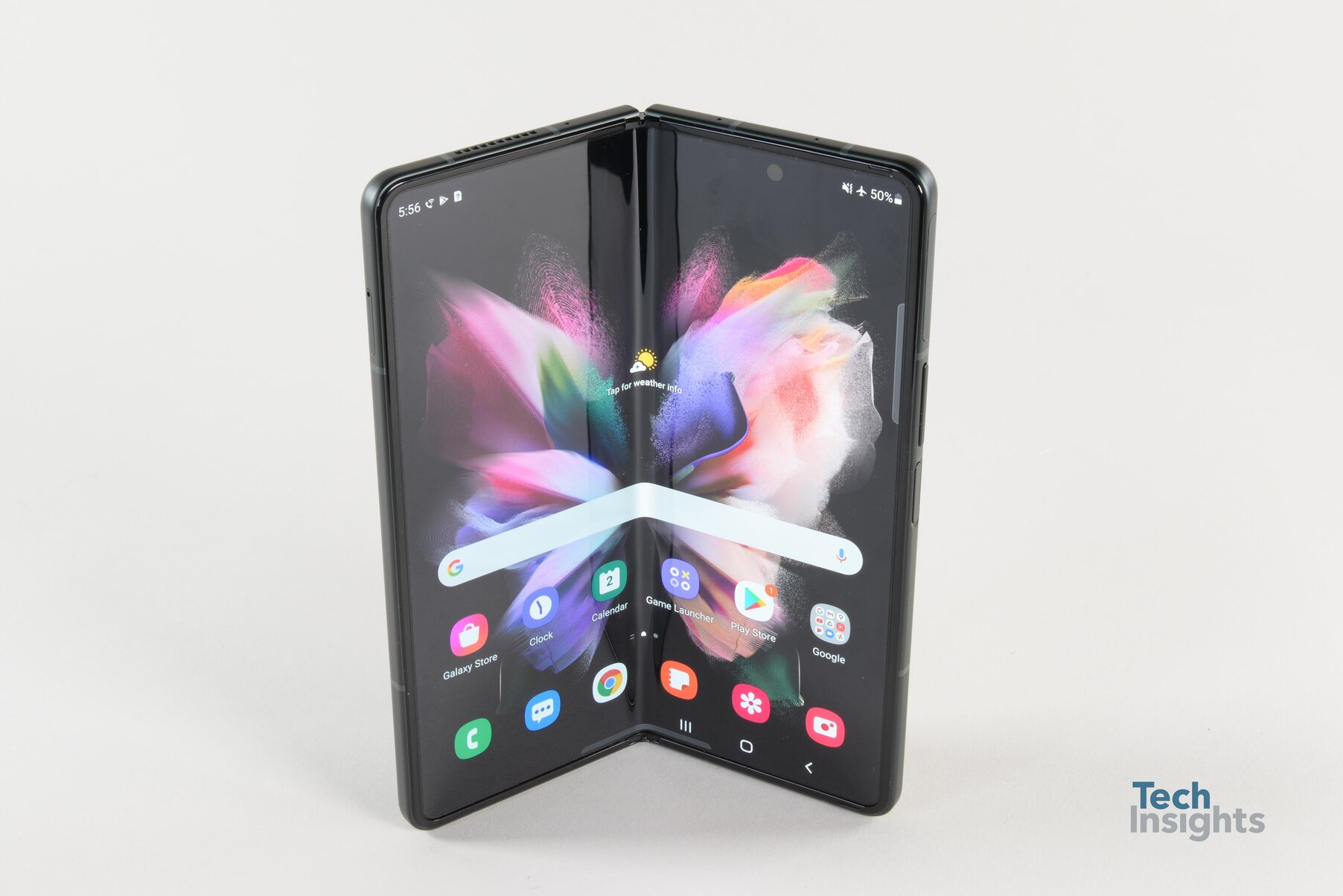
Foldable phones, once thought to be a dream, have become a reality.
While flip phones were introduced many years ago as one of the first iterations of expanding cell phone form factors, it wasn’t the screen that folded but more the phone housing and keyboard.
Foldable phones, on the other hand, are smartphones with special displays that can bend in half. While flexible displays are not a new concept, moving them into a consumer item where billions of units are sold yearly is. And that means it could be big business for companies developing these phones.
Foldable smartphones generally include flexible organic light emitting diode (OLED) technology that can twist, bend and fold much like a sheet of paper.
The biggest advantages to foldable smartphones include:
- Double the screen size for streaming or other media.
- Multitasking to watch a video and surf the web simultaneously in a split screen.
However, these phones are notably much thicker and heavier in comparison to a regular smartphone given that the larger screen folds underneath the other.
Samsung’s Galaxy Z Fold 5G is one of the few foldable phones on the market but it may be the most advanced with Qualcomm Octa-Core Snapdragon 888 applications processor and a 7.6 inch active-matrix OLED (AMOLED) with Octa touchscreen display.
The following is a partial deep dive of the Samsung Galaxy Z Fold 5G conducted by TechInsights.
Summary points
- 7.6 inch, AMOLD Y-Octa with touchscreen display
- 12 GB mobile LPDDR5 SDRAM
- 4 MP front BSI CMOS
- 12 MP wide angle BSI CMOS
Target market:Telecommunications
Released:August, 2021
Pricing:$1,799
Availability: Worldwide
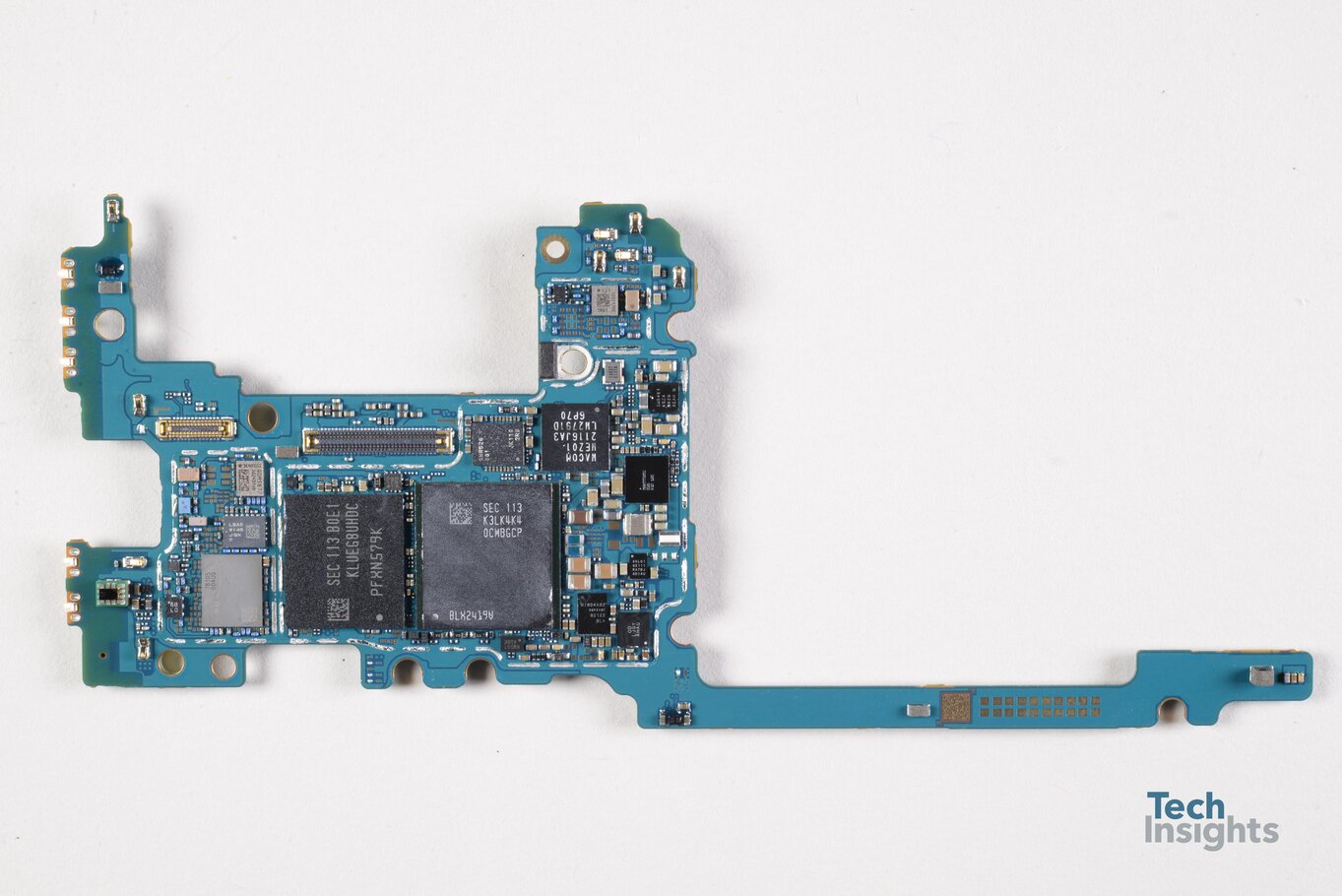
Main board
The main board of the Galaxy Z Fold 5G is the main processing engine for the functions of the smartphone as it houses the Qualcomm octa-core Snapdragon 888 applications processor as well as the main memory and electronic components. Specifically, the components include:
- Maxim’s power management chip.
- Wacom’s digital controller with memory
- Multi-chip memory – 256 GB 3D TLC V-NAND flash memory controller from Samsung
- Samsung’s secure element chip, wireless power receiver and 12 GB mobile LPDDR5 SDRAM
- Texas Instruments Dialog Semiconductor’s programmable mixed signal array
- Dialog Semiconductor’s programmable mixed signal array
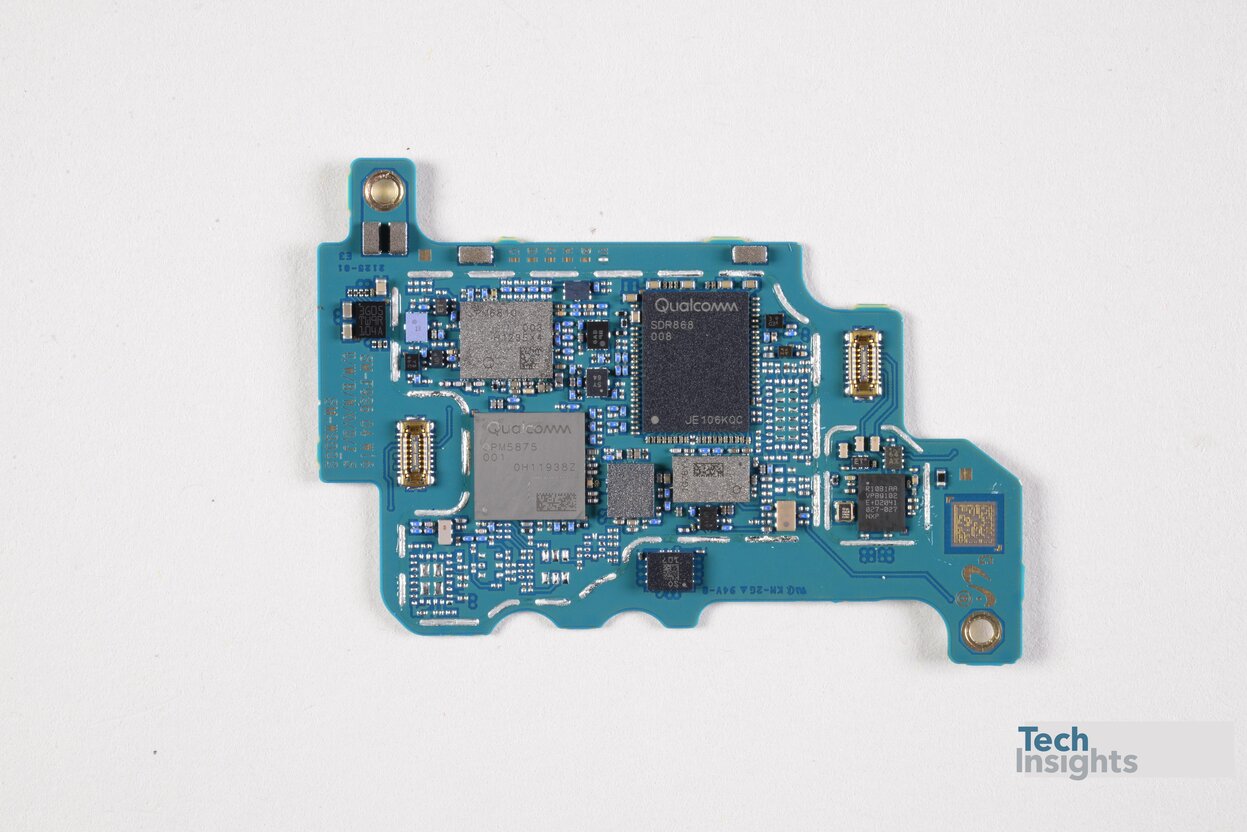
RF board
The RF board inside the Galaxy Z Fold 5G smartphone contains the communications components for the phone as well as the sensors.
Specifically, it houses the 32-bit ARM Cortex-MD microcontroller and six-axis MEMS accelerator and gyroscope from ST Microelectronics; the quad-band GSM power amplifier from Skyworks; the RF transceiver, front-end module, LB front-end module and RF switch from Qualcomm; NXP Semiconductor’s UWB chip; Maxscend’s SPDT and DPDT RF switches; and the LTE-U LNA from Infineon.
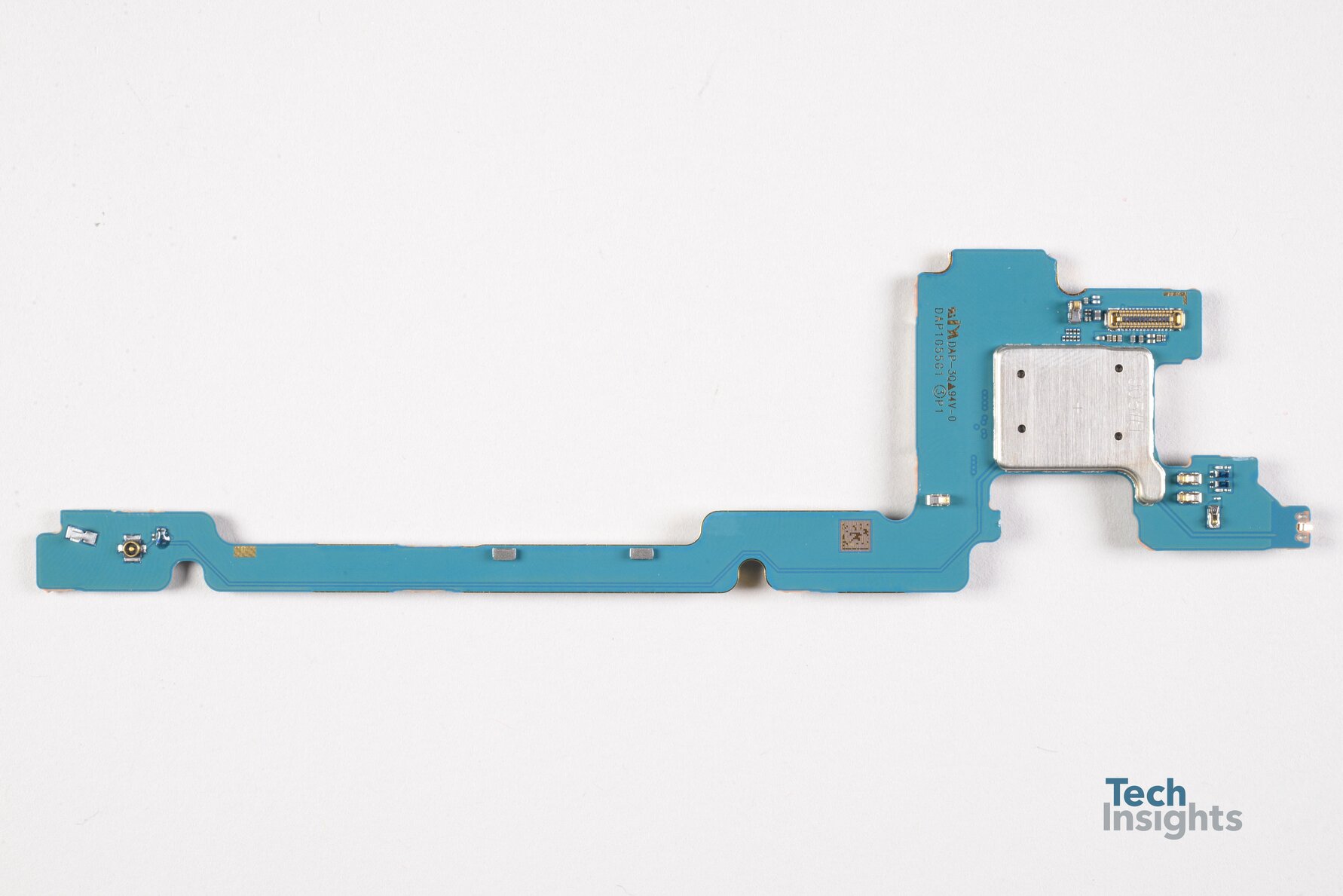
Secondary board
The secondary board inside Samsung’s Galaxy Z Fold 5G smartphone contains the electronic components used for controlling the displays, audio and cameras. The semiconductors found on this board include:
Samsung’s display power management, camera power management and overcurrent protection chips
- Texas Instruments audio amplifier
- Cirrus Logic’s class-D audio amplifier
- Silicon Mitus’ display power management chip
- NXP Semiconductors’ 24-bit I/O expander
- Diodes Inc.’s four-lane MIPI SPDT switch
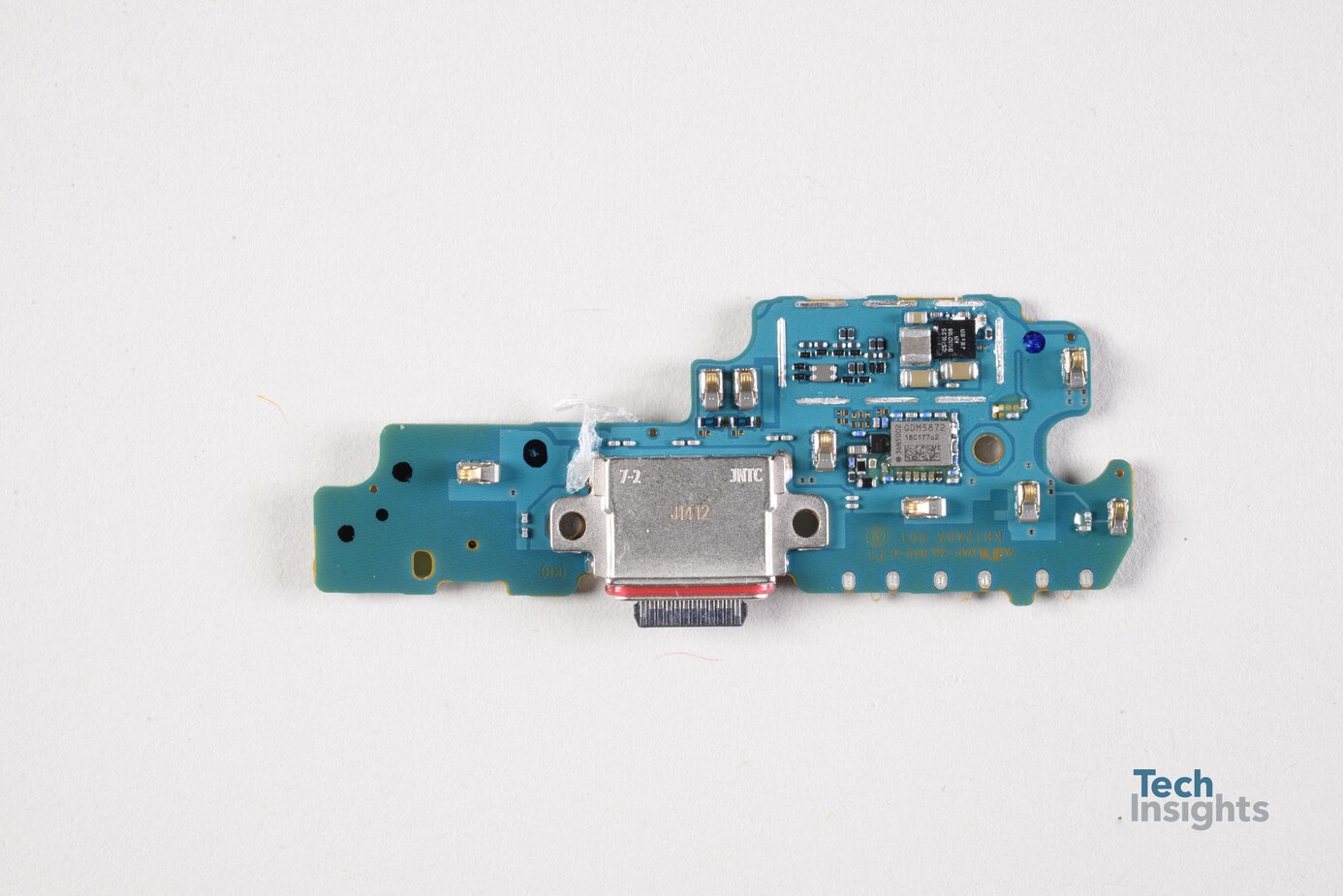
USB board
Inside the USB board of the Samsung Galaxy Z Fold 5G phone is the electronic components used to enable 5G connections and USB controls. The components include Cirrus Logic’s Haptic driver, Qualcomm’s 5G NR and LTE HB/MB RxD front-end module and the Semtech capacitive proximity controller.
Major Components
- $138.99 — 120 Hz main display/touchscreen subsystem — Samsung (QTY: 1)
- $125.86 — Octa-core Snapdragon 888 applications/baseband processor — Qualcomm (QTY: 1)
- $52.84 — 12 MP dual rear camera subsystem (QTY: 1)
- $52.30 — 120 Hz secondary display/touchscreen subsystem — Samsung (QTY: 1)
- $45.17 — Multichip memory — 12 GB mobile LPDDR5 SDRAM — Samsung (QTY: 1)
- $28.91 — Multichip memory — 259 GB 3D TLC-V-NAND flash memory controllers — Samsung (QTY: 1)
- $20.93 — 5G mmWave subsystem 1 — Qualcomm (QTY: 1)
- $20.93 — 5G mmWave subsystem 1 — Qualcomm (QTY: 1)
- $17.59 — RF transceiver plus GPS — Qualcomm (QTY: 1)
- $15.34 — Right enclosure (QTY: 1)
Subscribe to TechInsights Blogs
Join our list to get the latest blog posts directly in your email.









